If you’ve been driving through U.S. cities and towns, you’ve likely noticed an increase in roundabouts replacing traditional four-way intersections. Some drivers embrace them as an efficient traffic solution, while others find them confusing or even intimidating.
But what exactly is a roundabout, and why is it becoming a preferred alternative to stop signs and traffic signals? Roundabouts are not just about traffic flow—they are a safer, more efficient, and environmentally friendly way to design roads.
Let’s break down what roundabouts are, how they work, and why they are considered one of the most effective traffic management solutions today.
What is a Roundabout? Understanding the Basics
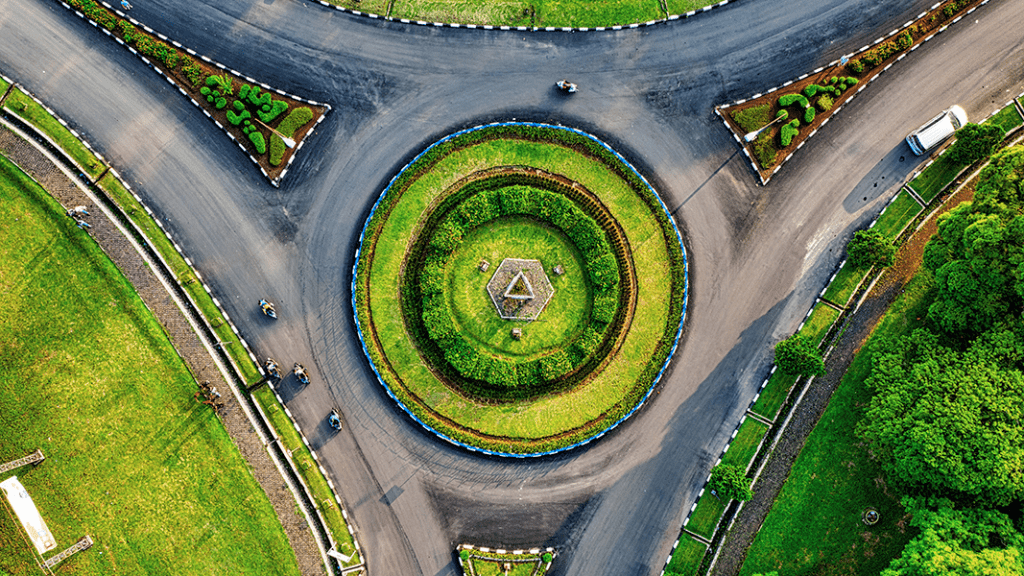
A roundabout—also known as a rotary or traffic circle—is a circular intersection where vehicles move counterclockwise around a central island. Unlike traditional intersections controlled by stop signs or traffic lights, roundabouts operate using a yield-at-entry system, meaning:



Most roundabouts also include:



The result? A smoother, safer, and more efficient intersection that reduces both traffic delays and accidents.
A Brief History of Roundabouts
Many people assume roundabouts are a modern innovation, but their history dates back hundreds of years.
Video : Roundabout Safety Benefits
- 1700s – Early versions of circular intersections appeared in Europe, particularly in England and France.
- 1800s-1900s – Washington, D.C. was designed with multiple traffic circles, inspired by European models.
- 1950s – The United Kingdom introduced the yield-at-entry rule, transforming roundabouts into the efficient system we use today.
- 1990s – The first modern roundabout in the U.S. was built in Summerlin, Nevada in 1990.
- Today – Over 10,000 roundabouts exist in the United States, with more being installed every year.
While roundabouts have been common in Europe and Australia for decades, the U.S. is now rapidly adopting them due to their proven safety and efficiency benefits.
Why Roundabouts Are Safer Than Traditional Intersections
One of the biggest reasons cities are replacing traditional intersections with roundabouts is safety.
1. Fewer Conflict Points = Fewer Accidents
A typical four-way intersection has 32 conflict points—areas where vehicle paths cross, increasing the risk of collisions. In contrast, a roundabout reduces conflict points to just 8.
This means:



According to the Federal Highway Administration (FHWA), roundabouts can reduce serious and fatal crashes by up to 90% when replacing a stop-controlled intersection. Even when replacing a traffic signal intersection, they reduce serious crashes by nearly 80%.
2. Lower Speeds = Less Severe Collisions
In a roundabout, vehicles enter and exit at lower speeds (15-25 mph), compared to the higher speeds (40-50 mph) seen at traditional intersections.
Lower speeds lead to:



3. Safer for Pedestrians and Cyclists
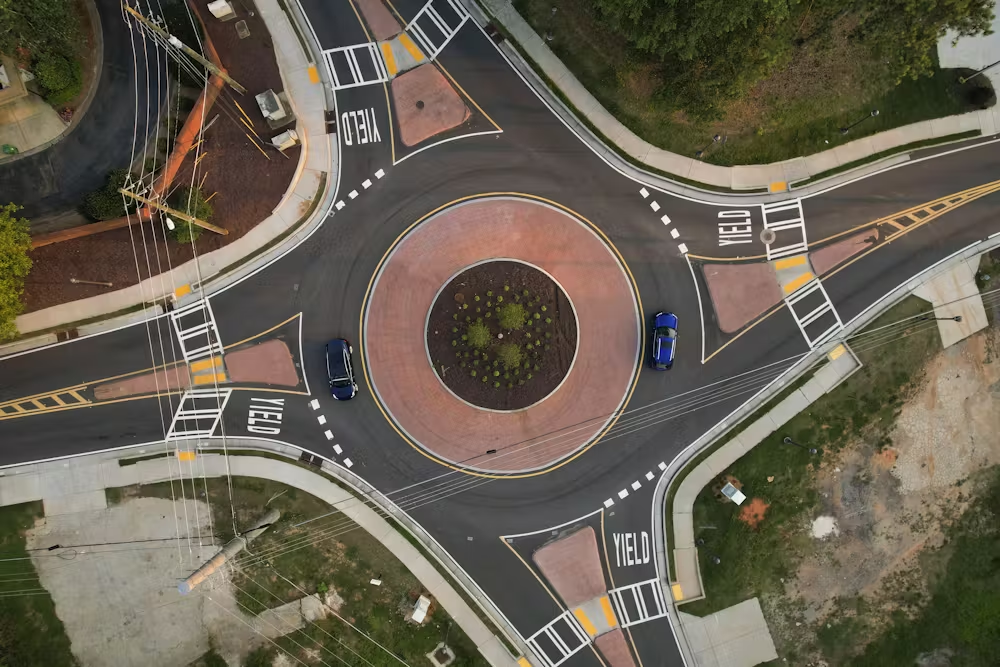
Roundabouts offer better protection for pedestrians because:



With these safety features, roundabouts significantly reduce pedestrian-related accidents compared to traditional intersections.
Efficiency: Why Roundabouts Improve Traffic Flow
Beyond safety, roundabouts are also more efficient than stop signs or traffic lights.
1. Less Waiting, More Moving
At a traditional intersection, cars must stop at red lights, even when there’s no cross traffic. In a roundabout:



2. Eliminating Left Turns = Smoother Flow
One of the most dangerous and disruptive movements at an intersection is the left turn. Roundabouts eliminate left turns, forcing all vehicles to move in the same direction, improving:


3. Roundabouts Handle High Traffic Volumes Better
Unlike stop signs and traffic lights, which cause congestion during peak hours, roundabouts allow continuous movement, making them ideal for high-traffic areas.
Environmental Benefits: How Roundabouts Help the Planet
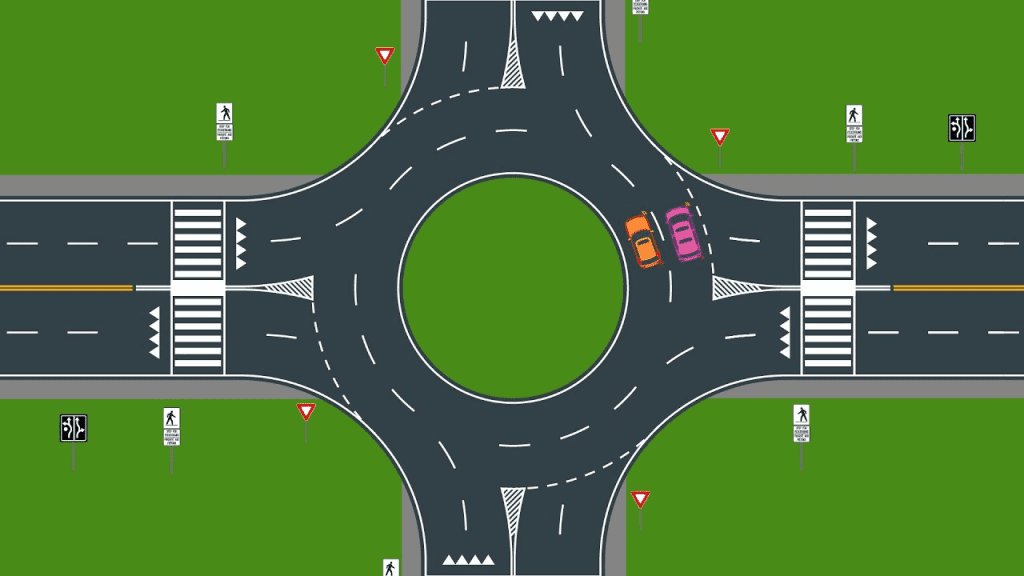
Roundabouts aren’t just safer and more efficient—they also have environmental advantages.
1. Reduced Fuel Consumption


According to studies, roundabouts can reduce fuel consumption by up to 30%, making them a cost-effective solution for drivers.
2. Lower Carbon Emissions
Fewer stops and starts mean lower emissions, helping reduce air pollution in urban areas. Cities that replace signalized intersections with roundabouts see:


3. Less Road Maintenance Required


With less infrastructure to maintain, roundabouts save cities money in the long run.
Challenges: Why Some Drivers Struggle with Roundabouts
Despite their many benefits, some drivers remain hesitant about roundabouts. Common challenges include:



However, studies show that once drivers become familiar with roundabouts, their confidence improves significantly.
Video : Principles of Intersection Safety
Final Thoughts: Are Roundabouts the Future of Road Design?
Roundabouts are more than just a traffic trend—they are a safer, smarter, and greener solution for modern transportation. With their ability to reduce crashes, improve traffic flow, and lower emissions, they are quickly becoming a preferred alternative to traditional intersections.



As more states adopt roundabouts in urban and suburban planning, they will likely become a permanent feature of America’s roadways.
So next time you approach a roundabout, embrace the change—it’s making our roads safer and more efficient for everyone!
Minha irmã e sua família se mudaram para minha casa sem minha permissão — o carma os atingiu com força no mesmo dia
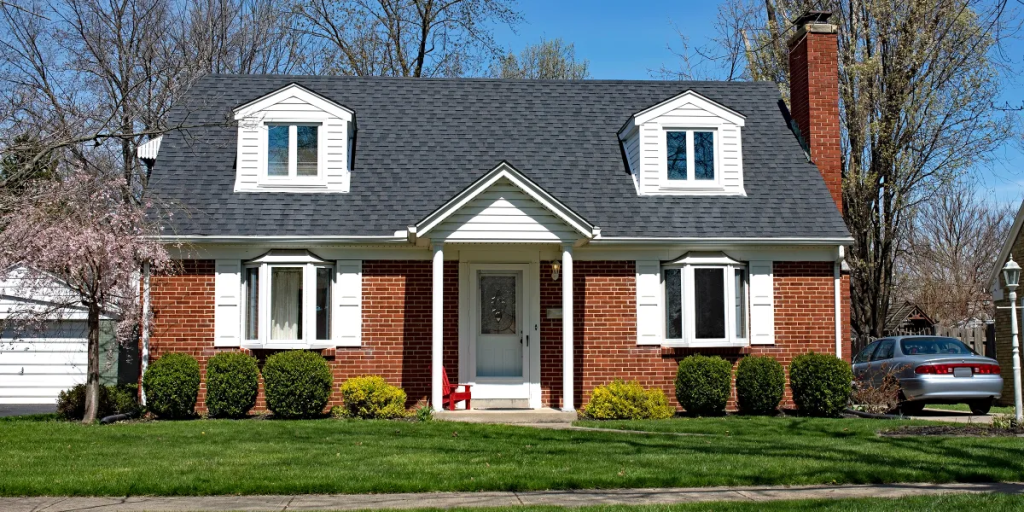
Phoebe pensou que seu dia não poderia piorar quando encontrou sua irmã e sua família se instalando em sua casa sem pedir. Mas quando a esperança parecia perdida, uma batida inesperada na porta pôs em movimento uma deliciosa porção de carma instantâneo.
Eu sempre fui próximo da minha irmã enquanto crescia, mas as coisas mudaram depois que ela se casou. O que aconteceu entre nós alguns dias atrás foi algo que nunca vou esquecer.

Uma mulher parada perto de uma janela | Fonte: Midjourney
Eu sou Phoebe, 31, e tenho uma casa modesta de três quartos. Não é nada chique, mas é minha, e tenho muito orgulho dela.
Estou pagando essa dívida há dez anos, trabalhando dia e noite para pagar a hipoteca.
Não vou negar que às vezes invejo meus amigos que moram em seus apartamentos chiques no centro da cidade, mas então lembro que este lugar é meu. Nenhum senhorio respirando no meu pescoço, e nenhum colega de quarto deixando pratos sujos na pia. Só eu e meu espaço.

Uma mulher olhando para frente, sorrindo | Fonte: Midjourney
Agora, deixe-me apresentar a vocês minha irmã, Holly.
Ela tem 38 anos, é mãe de dois filhos e é casada com seu namorado do ensino médio, Nicholas. Costumávamos ser próximos quando éramos mais jovens, mas as coisas mudaram quando ela se casou. Ela começou a se concentrar mais em sua nova vida, e eu nunca a culpei. Acredito que ela fez o que achou que era melhor para ela.
Nós nos afastamos, mas ainda estávamos em bons termos. Ou assim eu pensava.

Uma mulher sorrindo | Fonte: Midjourney
Holly e Nicholas sempre foram do tipo espírito livre. Eles são uma dessas pessoas que estão sempre falando sobre “abandonar a corrida dos ratos” e “viver a vida ao máximo”.
Eu ficava louco quando nos reuníamos para jantares em família.
“A vida é curta demais para ficar presa em um cubículo, Phoebe”, Holly dizia, tomando seu vinho. “Você deveria viajar mais, ver o mundo!”
Eu revirava os olhos.
“Alguns de nós gostam de ter um salário fixo e um teto sobre nossas cabeças, Holly.”

Uma mulher conversando com sua irmã | Fonte: Midjourney
Nicholas intervinha: “Mas pense nas experiências! Nas memórias!”
É, bom, memórias não pagam as contas, meu amigo, eu acho.
Tentei dizer a eles para serem mais cuidadosos com o dinheiro. Eles estavam sempre saindo em viagens de última hora ou comprando os últimos gadgets, mesmo com dois filhos pequenos para pensar.
Mas eles ouviram? Não.
Alguns meses atrás, eles realmente fizeram isso. Eles venderam a casa durante o boom do mercado, pensando que usariam o lucro para financiar uma pausa de um ano para “viajar pelo mundo”.

Um avião voando sobre a terra | Fonte: Pexels
Lembro-me da conversa como se fosse ontem.
“Estamos conseguindo, Phoebe!” Holly gritou ao telefone. “Vendemos a casa!”
“O quê?” Eu quase engasguei com meu café. “Holly, você está falando sério? E a escola das crianças? Seus empregos?”
“Oh, nós os educaremos em casa na estrada. Será uma educação em si! E sempre podemos encontrar trabalho depois. Esta é nossa chance de realmente viver!”
Tentei fazê-la ter algum juízo. Eu estava realmente preocupado.

Uma mulher preocupada olhando para frente | Fonte: Midjourney
“Holly, você realmente pensou nisso? Viajar é caro, especialmente com crianças. O que acontece quando o dinheiro acaba?”
“Não seja tão preocupada, Phoebe”, ela disse, ignorando as preocupações. “Nós já temos tudo planejado. Nós ficaremos em albergues, talvez façamos algum trabalho voluntário para conseguirmos hospedagem e alimentação. Vai ficar tudo bem!”
Não estava bem. De jeito nenhum.
No início, suas redes sociais estavam cheias de fotos de bons hotéis e restaurantes chiques.
“Vivendo o sonho!”, eles legendavam cada postagem.
Mas em dois meses, essas postagens começaram a diminuir.

Uma mulher usando seu laptop | Fonte: Pexels
A última que vi foi uma foto granulada deles acampando em algum campo, com uma legenda sobre “abraçar a vida simples”.
Então, silêncio de rádio por algumas semanas. Eu pensei que eles estavam apenas ocupados aproveitando suas viagens, sem saber o que realmente estava acontecendo nos bastidores.
Um dia, cheguei em casa do trabalho, exausto depois de um longo dia de reuniões e prazos. Tudo o que eu queria era tirar os sapatos, servir uma taça de vinho e assistir a uma maratona de reality shows trash.
Mas assim que abri a porta da frente, percebi que algo estava errado.
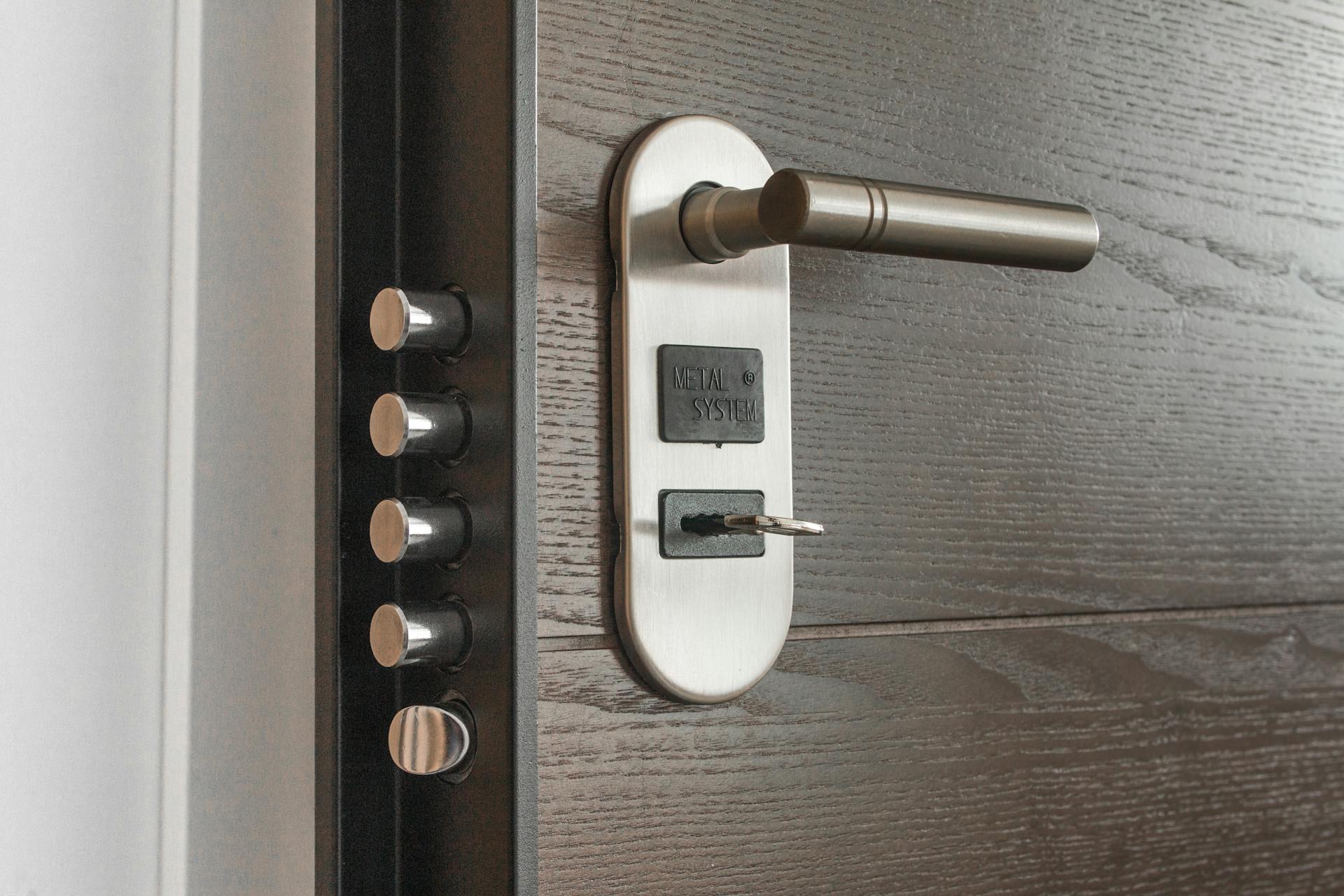
Uma maçaneta | Fonte: Pexels
Havia sapatos que não reconheci na entrada, mochilas infantis no chão e vozes familiares vindas da minha sala de estar.
Entrei e lá estavam eles.
Holly, Nicholas e seus dois filhos. Eles estavam desempacotando malas e caixas na MINHA sala de estar.
“Holly?”, eu soltei, apertando os olhos enquanto olhava para a bagunça na minha sala de estar. “O que… o que você está fazendo aqui?”
“Oh, oi Phoebe!” Holly gorjeou. “Surpresa! Estamos de volta!”
“De volta?”, repeti. “Na minha casa?”

Uma mulher conversando com sua irmã | Fonte: Midjourney
Então, Nicholas deu um passo à frente, sorrindo como se isso fosse a coisa mais normal do mundo.
“É, decidimos encurtar a viagem”, ele disse. “Acontece que viajar em tempo integral com crianças é mais difícil do que pensávamos!”
“E a mamãe nos deu sua chave reserva… aquela que você deu a ela para emergências”, Holly acrescentou. “Eu sabia que você não se importaria de ficarmos aqui por um tempo enquanto resolvemos as coisas. Vai ser só por alguns meses.”

Uma mulher parada na casa da irmã | Fonte: Midjourney
“Alguns meses?”, protestei. “Holly, você está falando sério? Você não pode simplesmente se mudar para minha casa sem me pedir!”
“Mas… somos uma família. Achei que você ficaria feliz em nos ajudar.”
“Feliz?” Eu podia sentir minhas bochechas queimando de raiva. “Holly, esta é minha casa. Meu espaço. Você deveria ter falado comigo sobre isso!”
“Ora, ora, Phoebe,” Nicholas interrompeu. “Não vamos ficar muito arrogantes aqui. Família ajuda família, certo? Não é como se você estivesse usando todo esse espaço de qualquer maneira.”

Um homem musculoso olhando para longe enquanto fala com a irmã de sua esposa | Fonte: Midjourney
Eu não conseguia acreditar no que estava ouvindo. De onde veio esse direito? Por que eles estavam agindo como se o que fizeram fosse bom?
“Vocês precisam ir embora”, eu disse, cruzando os braços sobre o peito. “Agora.”
Mas Holly recusou.
Enquanto isso, Nicholas começou a me ameaçar sutilmente.
“Vamos, Phoebe”, ele começou, pairando sobre mim. “Não torne isso difícil. Não temos mais para onde ir.”
Fiquei furioso. Se eu chamasse a polícia, os filhos deles poderiam ser arrastados para isso, e eu não queria isso.

Um close-up de uma mulher | Fonte: Midjourney
Eu precisava bolar um plano, então fui direto para o meu quarto e tranquei a porta.
Naquele momento, eu sinceramente senti vontade de chorar. Eu não tinha ideia do que fazer até meu telefone vibrar. Era uma mensagem do meu antigo amigo da faculdade, Alex.
Ei, Pheebs! Na sua área para trabalhar. Bebidas hoje à noite?
Alex sempre foi o brincalhão do nosso grupo de amigos, sempre inventando esquemas malucos. Se alguém podia me ajudar a sair dessa confusão, era ele.

Uma mulher pensando enquanto segura seu telefone | Fonte: Midjourney
Eu respondi rapidamente a mensagem.
Na verdade, você pode vir? Tenho uma situação e poderia usar sua ajuda. Traga suas habilidades de atuação.
A campainha tocou uma hora depois, e corri para atender antes que Holly ou Nicholas pudessem. Quando abri a porta, vi um policial parado na minha porta.
“Meu Deus, Alex!” Olhei para ele com os olhos arregalados. “Você está usando a fantasia perfeita!”
Saí rapidamente e fechei a porta atrás de mim.
“O que aconteceu, Pheebs?” ele perguntou.

Um homem vestido de policial | Fonte: Midjourney
“Preciso da sua ajuda para me livrar dos meus parentes”, eu disse a ele, ainda fascinado pelo seu uniforme falso de policial. “Eles tomaram conta da minha casa completamente.”
Expliquei rapidamente a situação, e Alex concordou em ajudar. Então, abri a porta e chamei Holly e Nicholas.
“Holly, Nicholas, vocês podem vir aqui, por favor? Tem um policial que precisa falar conosco.”
Eles estavam sorrindo quando entraram no corredor, mas suas expressões mudaram imediatamente quando viram Alex em seu uniforme.

Uma mulher olhando para frente | Fonte: Midjourney
“Boa noite”, disse Alex. “Sou o policial Johnson. Recebemos relatos de uma invasão neste endereço. Pode me dizer o que está acontecendo aqui?”
Nicholas olhou para mim, apertando os olhos. Então, ele estufou o peito e caminhou lentamente em direção a Alex.
“Não há arrombamento aqui, policial”, Nicholas disse em um tom sério. “Somos uma família. Está tudo bem.”
“Oficial, essas pessoas entraram na minha casa ilegalmente”, eu disse. “Eu nunca dei permissão para elas estarem aqui.”
Alex assentiu e então olhou para Holly e Nicholas.
“Como você conseguiu entrar nesta residência?” Alex perguntou.

Um policial conversando com um homem | Fonte: Midjourney
“Nós, uh, nós usamos uma chave”, Holly gaguejou. “Mamãe me deu. Era uma, uh, chave reserva para emergências.”
“Mas ninguém pediu minha permissão”, intervim. “Então, tecnicamente, você invadiu. Quem sabe o que pode estar faltando?”
“Entendo”, disse Alex, olhando ao redor da casa. “E quando o dono da casa pediu para você sair, você obedeceu?”
“Agora, espere um minuto”, Nicholas disse, sua voz tremendo levemente. “Nós fizemos—”

Um homem confuso | Fonte: Midjourney
“Receio que terei que pedir para você deixar o local imediatamente”, Alex o interrompeu, puxando um par de algemas. “Não fazer isso pode resultar em acusações de invasão de domicílio, bem como invasão de propriedade.”
Eu queria rir muito vendo Nicholas fingindo ser um policial. Ele era simplesmente incrível. Sua última frase foi o suficiente para deixar Holly e Nicholas em pânico.
“Desculpe-nos…” Holly começou. “Vamos arrumar as malas.”

Um close-up do rosto de uma mulher | Fonte: Midjourney
Eles rapidamente começaram a jogar suas coisas nas malas.
“Se você for embora agora mesmo”, disse Alex severamente, “não vou apresentar queixa. Mas você vai devolver a chave e nunca mais invadirá a propriedade.”
Eles não precisaram ser avisados duas vezes. Alex e eu assistimos em silêncio enquanto eles pegavam seus filhos e suas malas e saíam correndo de casa.
Eu finalmente ri quando o carro deles saiu em disparada.
“Você é um salva-vidas, Alex”, eu disse, balançando a cabeça em descrença. “Café?”
“Claro!” ele disse enquanto entrava e fechava a porta atrás de si.

Um policial sorrindo | Fonte: Midjourney
Rapidamente preparei duas xícaras de café antes de nos sentarmos na minha sala de estar, agora silenciosa.
“Não acredito que eles simplesmente presumiram que poderiam viver aqui”, disse Alex, balançando a cabeça.
“Eu sei”, suspirei. “Parte de mim se sente culpada, sabia? Eles são família, afinal. Mas eu simplesmente não podia deixá-los me aproveitar daquele jeito.”
“Você fez a coisa certa, Phoebe”, Alex me tranquilizou. “Eles não podem simplesmente tirar vantagem de você porque o esquema maluco deles falhou.”

Um policial conversando com seu amigo | Fonte: Midjourney
“Estou tão feliz que você me mandou mensagem na hora certa, Alex”, eu disse, olhando para o meu telefone. “Não sei o que teria feito sem você. Mas por que você veio vestido como um policial?”
“Ah, isso”, Alex riu. “Eu estava só brincando com os amigos, pregando peças e tudo. Não tinha ideia de que minha fantasia seria útil aqui. Que coincidência, né?”
“Sim”, eu assenti. “Que coincidência.”

Uma mulher pensando sentada em um sofá | Fonte: Midjourney
Enquanto conversávamos, não pude deixar de pensar nas consequências das minhas ações. Eu tinha feito a coisa certa? Isso criaria uma barreira irreparável entre mim e minha irmã?
Mas então olhei ao redor da minha sala de estar. Era meu espaço, e eu tinha trabalhado muito duro por ele. Pensei em todas as longas horas e sacrifícios que fiz para comprar uma casa e percebi que não podia deixar Holly e Nicholas simplesmente tomarem conta de tudo.
Também percebi que era ok me colocar em primeiro lugar. Era ok me defender e não deixar que as pessoas me pisassem.
O que você teria feito se estivesse no meu lugar?
Se você gostou de ler esta história, aqui vai outra que você pode gostar: Jack fica furioso quando sua cunhada aparece em um evento familiar com o vestido querido de sua falecida esposa, Della. Mas o golpe final vem quando ela “acidentalmente” o estraga bem na frente dele. Jack segura sua raiva, mas o carma tem seu jeito de fazer justiça de maneiras que ninguém espera.
Este trabalho é inspirado em eventos e pessoas reais, mas foi ficcionalizado para fins criativos. Nomes, personagens e detalhes foram alterados para proteger a privacidade e melhorar a narrativa. Qualquer semelhança com pessoas reais, vivas ou mortas, ou eventos reais é mera coincidência e não intencional do autor.
O autor e a editora não fazem nenhuma reivindicação quanto à precisão dos eventos ou à representação dos personagens e não são responsáveis por nenhuma interpretação errônea. Esta história é fornecida “como está”, e quaisquer opiniões expressas são as dos personagens e não refletem as opiniões do autor ou da editora.



Leave a Reply